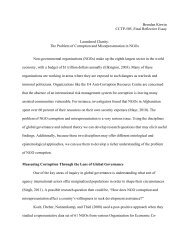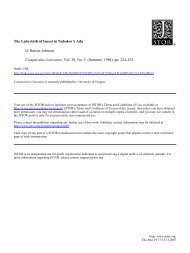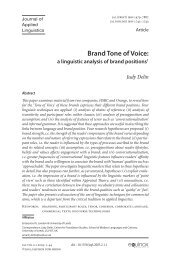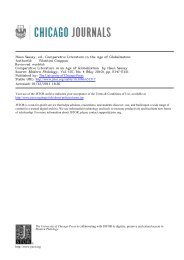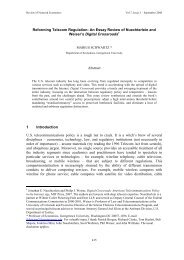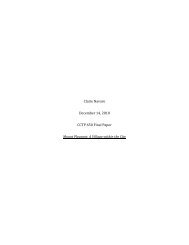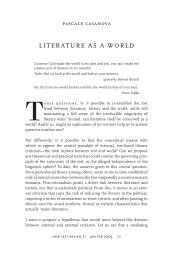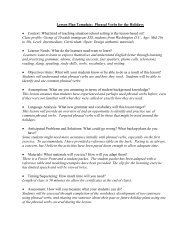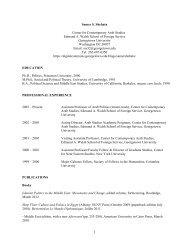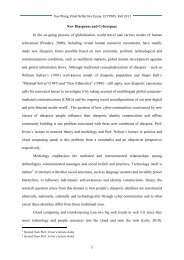roote-prokop-2013-g3-drosophila-genetics-training-all
roote-prokop-2013-g3-drosophila-genetics-training-all
roote-prokop-2013-g3-drosophila-genetics-training-all
You also want an ePaper? Increase the reach of your titles
YUMPU automatically turns print PDFs into web optimized ePapers that Google loves.
A. Prokop - A rough guide to Drosophila mating schemes 10<br />
Recombination frequencies have been used to generate spatial chromosomal maps of gene loci<br />
(recombination maps), defining 1% chance of crossing-over between two loci as 1 map unit (or<br />
centimorgan, cM) [2]. 50% is the maximum detectable crossing-over frequency because crossingover<br />
is happening at the 4-strand stage; only 2 strands are involved in any one event and exchange<br />
between sister chromatids produces no observable changes. If two genes are 50 cMs apart then<br />
they are equivalent to being unlinked (due to the increase in multiple crossing-over events occurring<br />
between them). If the location of two loci is known relative to the cytogenetic map, their position on<br />
the recombination map can be roughly estimated and the recombination frequency between them<br />
deduced (Fig. 7B and bottom of Box 4).<br />
Figure 7. Inheritance of genes on the same chromosome (linked genes)<br />
(P) A cross between flies heterozygous for viable recessive mutations of the 3 rd chromosomal loci rosy<br />
(ry; brownish eyes, 87D9-87D9) and ebony (e; black body colour, 93C7-93D1); female chromosomes are<br />
shown in green, male in blue. According to the law of segregation, homologous chromosomes are<br />
distributed to different gametes (egg and sperm) during gametogenesis. Male chromosomes do not<br />
undergo crossing-over. In females, crossing-overs are possible (red zigzag lines), and recombination<br />
between any pair of genes may (yes) or may not (no) occur (at a frequency dependent on their location<br />
and distance apart), thus increasing the number of different genotypes. In the first filial generation (F1),<br />
three potential genotypes and two potential phenotypes would have been expected in the absence of<br />
recombination (strict gene linkage); this number is increased to 7 genotypes and 4 phenotypes when<br />
including crossing-over.<br />
For mating schemes, recombination can be a threat as well as an intended outcome:<br />
There are two key remedies to prevent unwanted recombination during mating schemes. The<br />
first strategy is to use balancer chromosomes (section 4.3). The second strategy is to take<br />
advantage of the recombination rule. The recombination rule states that there is no<br />
crossing-over in Drosophila males (Fig. 7). The reason for this is not clear but might relate<br />
to the observation that, although reductional divisions occur and haploid gametes are<br />
produced, the type of genes expressed in male meiosis "is much more similar to mitosis than to<br />
female meiosis" [44].<br />
In other occasions it can be the intended outcome of a mating scheme to recombine<br />
mutations onto the same chromosome. For example, in reverse to what is shown in Fig. 7,<br />
you may want to combine the rosy (ry) and ebony (e) mutations from different fly stocks onto<br />
one chromosome in order to perform studies of ry,e double-mutant flies. A typical mating<br />
scheme for this task is explained in Appendix 1.



